Why Is Copyediting Important?
Copyediting is quality assurance.

Photo by
on
Think you can get away with not copyediting your content? Think again.
Your audience values error-free content. The quality of your written content affects their purchases and their perception of your brand.
No matter what type of content you are releasing to the world, you need a copy editor. Nothing says unprofessional and untrustworthy like poor language.
Plenty of research confirms the value of copyediting.
Copyediting is an important function for the integrity of both print and digital content, a 2007 study reported.
Readers can tell when a news article isn’t edited, and it affects their perceptions about the news and their willingness to pay for it, according to a 2015 study. Even college-aged people value edited content free of errors: “Digitally savvy young people picked up on editing differences and reacted negatively to unedited content,” says an American Press Institute blog post about the study.
People have similar standards for marketing copy. A SurveyMonkey survey found that 85% of millennials are less likely to buy a product advertised with errors, and the same is true for 83% of people with a household income of $75,000 and higher.
Poor spelling and grammar are warning signs of an email scam.
And, of course, editing contributes to the success of books: 74% of book authors who earned more than $5,000 in sales invested in editing, while 53% of authors who earned less than $100 in sales did not invest in editing, according to a 2017 BookBaby survey of nearly 8,000 indie authors.
But I get it. You have a lot on your plate. Editing your content falls by the wayside in the rush to share it with the world.
That’s where Pristine Editing comes in!
We offer professional editing services that integrate seamlessly into your existing workflow. Send us your copy, turn your attention to other tasks, and in no time at all, we’ll return your pristine content to you.
Your audience will get the full impact of your words without being distracted by weird phrasing or misplaced punctuation.
Whether you’re a publication with tight deadlines, a freelancer or a small business launching a website and a newsletter, or a large company or organization about to release a white paper or cross-platform marketing campaign, Pristine Editing can contribute to the unwavering high reputation of your brand.
Kick-start a conversation with Pristine Editing by filling out this two-minute project request form.
Enjoy this post? Buy me a coffee in support.
Hi, I’m Jaime, editor and owner of Pristine Editing LLC. To get to know me better, and for more editing tips, sign up for my quarterly email newsletter! You can also follow me on LinkedIn and Instagram. And don’t miss out on my free style guide template.
6 Tabs I Always Have Open as I Copyedit
These references are my constant companions
Ever wonder what goes on behind the scenes when a copy editor polishes your content? It’s mostly reading a sentence three times and sometimes going back to read it a fourth; pondering; and looking things up.
As editor Crystal Shelley of Rabbit with a Red Pen once said, “Editing is just looking things up until you die.”

Photo by
on
What are editors looking up?
correct style (e.g., does the client want it to appear as 10 or as ten, as colour or color; do they use accent marks or no; do they like the ellipsis character mark or the three periods plus three spaces)
correct spelling
dates and job titles, etc. (to confirm them, in a sort of light fact check)
obscure grammar rules we don’t know off the top of our head or want to double-check for a tricky situation
definitions of words to make sure the writer has used them well
The list goes on.
To look up that stuff as I copyedit, I always have these six tabs open:
The Chicago Manual of Style or The Associated Press Style Book
clients’ house editorial style guide
site:website.com and “X”
The Chicago Manual of Style hyphenation guide
online search engine
‘The Chicago Manual of Style’ or ‘The Associated Press Style Book’
The two most typical style guides my clients use. Depending on the project, I’ll have one of them open for reference (I subscribe to the online versions). These resources offer guidance on everything from grammar, punctuation, and formatting to the correct usage of numbers, abbreviations, capitalization, and more.
Clients’ house editorial style guide
Many clients—though not all—use a house style guide in addition to one of the industry-wide guides above. I love when a client has an editorial style guide, but for clients who don’t, I can easily create one. These house guides contain specific preferences and brand-related language use that enables me to tailor the copyediting process to each client.
site:website.com and “X”
This online search engine technique comes in super handy mainly when a client doesn’t have a house style guide, and even when they do.
Typing site:website.com into a search enginerestricts the search results to only pages from the specified website. To search for a specific word or phrase, I add it in quotation marks after site:website.com and the word and: e.g., site:website.com and “X” searches for the exact word or phrase “X” on that site.
I use this tool to quickly find out how a client has typically styled a word or phrase on their website. It’s a great way to determine how a publication or organization has most commonly styled a word—even if the staff themselves aren’t sure. For example, imagine my client is The Daily News Bites, and the newspaper has a house style guide, but it doesn’t specify to use healthcare or health care as a noun. I can search site:dailynewsbites.com and “health care” as well as site:dailynewsbites.com and “healthcare” to see which style the newspaper uses most often (and then I can add that preference to the style guide I make for the client).
To use this tool successfully, I need a search engine that lists the number of search results so I can determine which style is most common.
That’s the entire reason I stopped using Google Search and now use Microsoft Bing. I’d love to use a data-privacy search engine like DuckDuckGo (I did use Neeva before it went belly up), but again, seeing the number of search results is critical, and DuckDuckGo doesn’t allow that.
https://x.com/PristineEditing/status/1483573898973220870
Merriam-Webster
My go-to dictionary. In May 2024, AP style made M-W its official primary dictionary, which means I can use M-W for all of my clients, whether they use Chicago or AP style.
I most often use Merriam-Webster to:
check hyphenations
see if a foreign word is listed (if a foreign word appears in M-W, it doesn’t need to be italicized, as is common style for foreign words — although there are exceptions to that)
clarify the precise meaning of a word in context to make sure the writer’s word choice is accurate
The ‘Chicago Manual of Style’ hyphenation guide
Half the time I’m searching for a word in Merriam-Webster, it’s simply to check if a word is hyphenated or not. This guide provides clear rules for hyphenation (for Chicago style, that is), ensuring uniformity of style throughout a document.
Online search engine
I’m constantly searching for nouns and proper nouns—company names, historical figures, scientific terms, etc.—to check that they’re spelled correctly and in the correct case (e.g., capitalized or lowercase).
This often leads to a little fact-checking too. In looking up the spelling of a politician’s name, for example, I’ve occasionally caught a writer calling that politician a senator when they’re a House representative.
Similar to site:website.com and “X” above, I often use an online search engine to determine which style for a word or phrase is the most used (and therefore the most SEO-friendly). For example, if I want to determine whether school teacher or schoolteacher is more common, I add quotation marks around each term in the search: e.g., “school teacher” and “schoolteacher.” Microsoft Bing tells me that school teacher has 36,200,000 results while schoolteacher has 138,000 results.
So, there you have it! These six tabs are my trusty crew when it comes to copyediting. Having these resources readily available allows me to ensure my clients’ content adheres to the highest editorial standards.
Do you have any questions about these resources or the copyediting process in general? Feel free to leave a comment below.
Enjoy this post? Buy me a coffee in support.
Hi, I’m Jaime, editor and owner of Pristine Editing LLC. To get to know me better, and for more editing tips, sign up for my quarterly email newsletter! You can also follow me on LinkedIn and Instagram. And don’t miss out on my free style guide template.
Case Study: The Atlantic/Google
How I helped The Atlantic’s creative content studio by copyediting a magazine for Google in a week
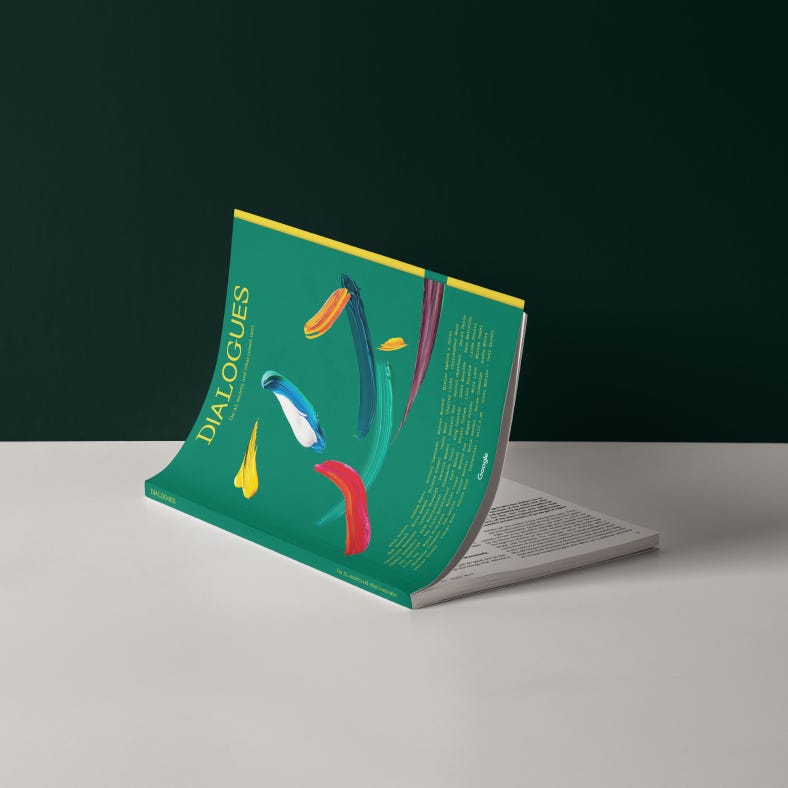
Dialogues, a Google magazine produced by ABP
Situation
In October 2023, Atlantic Brand Partners, the creative content studio of The Atlantic,asked me to copyedit a major project with one week from that day: a print magazine on artificial intelligence that ABP was producing for Google. The print magazine would include 16 stories (some interviews, some essays) in total, ranging from about 1,000 to 3,000 words.
Task
But there was an added challenge.
I only had 24 hours to copyedit each story. ABP would send the stories in Google Docs to me piecemeal, and I would edit them immediately: If I received a story by 10 a.m., ABP needed it back by 10 a.m. the next day. If I received a story by midnight, I had to return it by midnight the next day. Designers and other teams were working round the clock on this project.
Action
My agenda for October was already full, but the project sounded too cool to turn down. (I love copyediting print magazines.) So I rearranged my schedule as much as I could by asking my other clients who I knew might have flexible timelines if they would accept a deadline extension. I worked late and woke up early in order to meet ABP’s grueling schedule.
I also created a project management document in Google Sheets that would allow the ABP team and me to track each piece, word count, and deadline and rely on automatic notifications to reduce emails.
During the copyedit, I adhered to The Atlantic style, made corrections for grammar, punctuation, spelling, and syntax, and left comments with larger questions and concerns, as well as suggestions for fixes wherever possible. I caught mathematical/statistical errors. I communicated with editors to resolve larger concerns in a way that worked for all parties involved.
Result
In one week, I copyedited 44,070 words, allowing ABP to create a gorgeous magazine on a super crunched deadline for a major client.
Here is the resulting testimonial from Elizabeth Haq, who oversees editorial content and brand partnerships for ABP: “Thank you sincerely for the wonderful work you put into it. I think it turned out amazing, and the client agrees.”
Another editor who worked on the project, Gabriel Muller, said, “Thanks for all your great work on the Google Magazine. I’m always so impressed by the details you’re able to catch.”
Want to see the finished product for yourself? Check out the magazine and download it here.
Enjoy this post? Buy me a coffee in support.
Hi, I’m Jaime, editor and owner of Pristine Editing LLC. To get to know me better, and for more editing tips, sign up for my quarterly email newsletter! You can also follow me on LinkedIn and Instagram. And don’t miss out on my free style guide template.
A Small Yet Mighty Step I’ve Taken to Get Myself Credit as an Editor
When I first started working as a freelance copy editor in 2014, getting recognition for my work was furthest from my mind.
What was front and center was getting work. Any kind, any pay.
Then I began working as full-time copy editor at Time Out New York and learned the pleasure of having my name included in the masthead of every weekly issue.
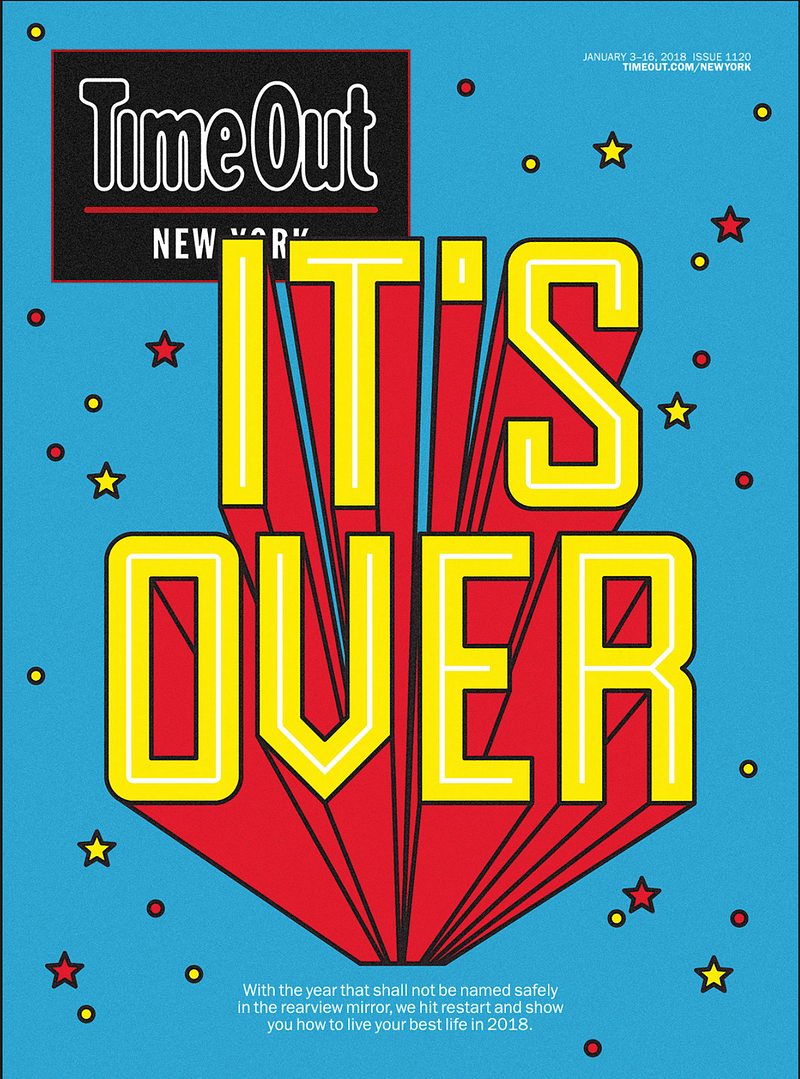
The cover of the last TONY issue I worked on in January 2018
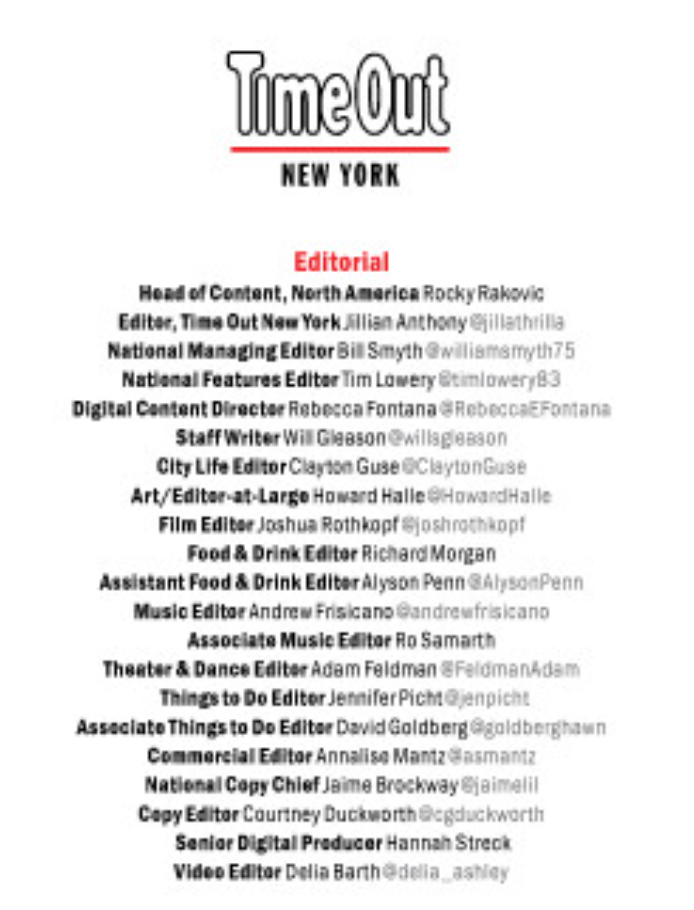
My name in the blurry masthead of the last TONY issue I worked on in January 2018 (four up from the bottom)
So it’s surprising even to me that I didn’t push for my name to be featured on clients’ projects when I again began freelance editing in 2018.
I copyedited fiction manuscripts whose authors mentioned their developmental editors but not me. I copyedited regularly for well-known content agencies and Fortune 100 businesses that never included my name anywhere on the multimedia content whose language I fine-tuned.
Occasionally I thought it would be nice to receive recognition, but I never did anything about it. It was just how the industry worked, I thought.
Of course, I named my clients (at least, all those who didn’t require me to sign an NDA) on my LinkedIn page and website.
But I realized I was missing out on referral opportunities by not having my name on the projects themselves.
At least one client has told me that he contacted me because he saw my name on a project he admired.
Clearly, getting credit matters.
This year, I’ve made a point of asking clients to feature my name.
So far, the response has been along the lines of: “Happy to! I’m sorry we didn’t think to do it sooner.”
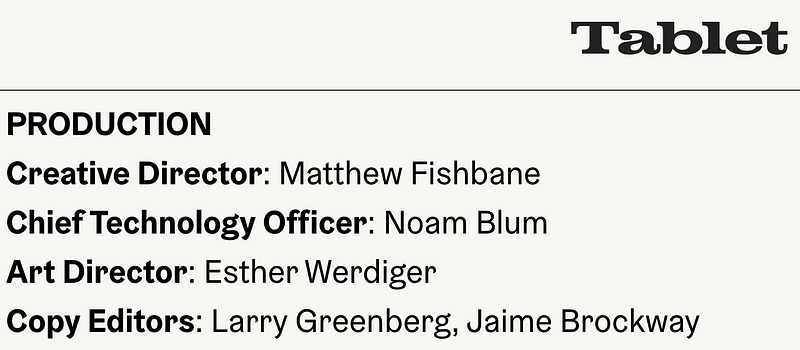
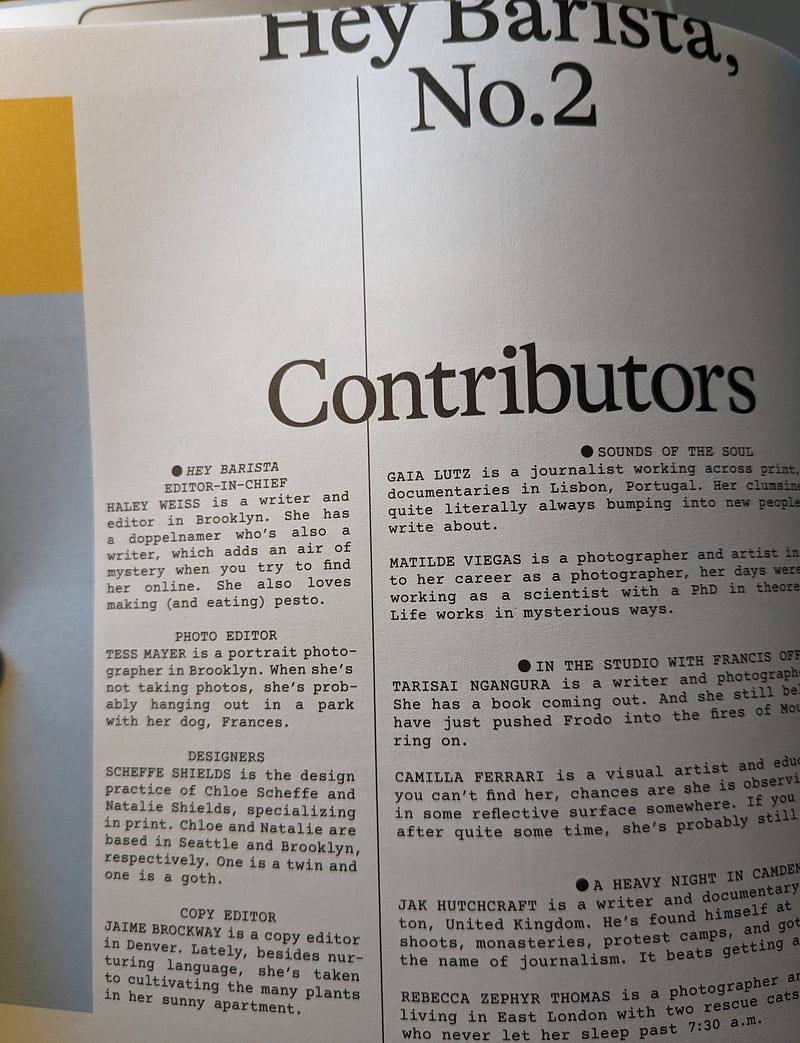
My bio in the bottom left corner of Oatly’s
Freelancing is challenging in many ways—mainly in that any success you have, or don’t have, is entirely on you. Would I have learned to advocate for myself as well if I weren’t a freelancer whose livelihood depended partly on getting credit? Probably not!
What small yet mighty step can you take today to receive credit for your work?
Enjoy this post? Buy me a coffee in support.
Hi, I’m Jaime, editor and owner of Pristine Editing LLC. To get to know me better, and for more editing tips, sign up for my quarterly email newsletter! You can also follow me on LinkedIn and Instagram. And don’t miss out on my free style guide template.
I Need to Make Sure You Know This One Thing About Editors
Recently, there was yet another round of layoffs in the editing world.
While it’s just the latest event in a yearslong trend, I wanted to say something about it nonetheless.
So I dropped work on my website redesign — coming in mid-September! — to hit you with this important broadcast … slash rant.
Here it is.
The first roles media companies tend to cut in times of financial struggle include copy editors.
These companies don’t want to reduce the quantity of content they publish. Unfortunately, that often means reducing the quality instead.
Last week the Texas Tribune laid off 11 employees, including its entire copy desk. (So long, copy editors who help to make sure the news is clear and accurate!)
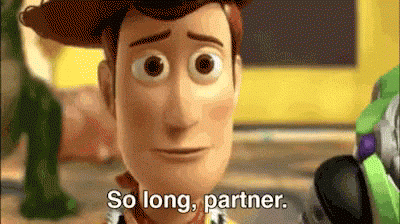
In June of this year, the Los Angeles Times cut 74 employees, and nearly a third came from news and copy editor ranks.
The trimming of editorial staff has been happening for years and years.
I was leading the copy desk at Time Out in 2017 when The New York Times cut its copy department, letting go of more than 100 copy editors.
The same thing is happening in the indie book world.
When times are tough, self-publishing authors can’t afford every round of editing. So they pass on a copy edit or proofread, or they combine edits.
(You all know how I feel about combo line and copy edits.)
I understand that, and I would much rather you share your stories with the world than not at all.
But I just want to make sure you know one thing:
*Copyediting and other forms of editing are important. They provide value. They provide quality assurance.*
And they do so across industries, increasing sales and readership.
Women are 81% less likely to buy a product advertised with spelling or grammar errors, and 77% of men agree.
Likewise, readers reported that poor writing, bad writing, grammar, spelling errors, mistakes, and language cause them to stop reading a book.
Copyediting upholds the integrity of journal articles, one study found.
Participants in another study “gave higher ratings to journalistic stories that had been edited than those that hadn’t.”
All of those surveys and studies show the efficacy of human editing, not AI or editing software — which is another important broadcast/rant I’ll grace you with later.
That’s all, folks.
Cheers,
Jaime
P.S. If you 100% believe in the power of editing and want me to edit your next project, don’t hesitate! Fill out this form.
Enjoy this post? Buy me a coffee in support.
Hi, I’m Jaime, editor and owner of Pristine Editing LLC. To get to know me better, and for more editing tips, sign up for my quarterly email newsletter! You can also follow me on LinkedIn and Instagram. And don’t miss out on my free style guide template.
A Roundup of My Favorite Quotes from ACES Accelerate
Nuggets of wisdom from writers and editors to other editors
ACES Accelerate was a virtual conference held by ACES: The Society for Editing, of which I am a member. There was so much to take away from the sessions at this conference that I could write many a blog post in reaction (coming soon!), but I wanted to share a quick roundup of my favorite quotes from a few presenters.

Photo by
on
Jenny Lawson, aka The Bloggess, is a blogger turned NYTimes-bestselling author who was the keynote speaker at ACES Accelerate. She had us laughing throughout her whole speech yet at the same time shared poignant insights on the writer-editor relationship, which is the exact charm of Jenny Lawson.
Cara Reedy, director at Disabled Journalists Association, and Wendy Lu, a senior staff editor at The New York Times, presented on avoiding disability euphemisms in the news. A couple points Reedy made stuck with me.
Lisa McLendon, who runs the Bremner Editing Center at the University of Kansas journalism school, offered some gems of advice that apply to all copy editors. Both of these are golden rules of copyediting.
Enjoy this post? Buy me a coffee in support.
Hi, I’m Jaime, editor and owner of Pristine Editing LLC. To get to know me better, and for more editing tips, sign up for my quarterly email newsletter! You can also follow me on LinkedIn and Instagram. And don’t miss out on my free style guide template.
I’m a Longtime Pro Editor Offering Consultation to New Editors
Access me for advice at BuyMeACoffee.com

Photo by
on
As with trying to start any new side gig, breaking into freelance editing can be daunting.
While there’s a wealth of online courses and books that share how to be a successful freelancer and editor, true confidence in your skills comes with practice over time.
If you’re new to editing, you may not feel 100% certain of your ability to meet clients’ needs or deliver quality editing services. Those feelings of insecurity or imposter syndrome are an obstacle to your success as a freelance editor.
For me, learning the ropes of editing under the mentorship of more experienced editors was crucial to the development of my skills and confidence.
So I decided to try and create the same experience for others. I want this Buy Me a Coffee community to be a place where new or aspiring editors — freelance or otherwise — can reach out to me for advice or assistance.
https://media.giphy.com/media/GNBCVMv6XobnMUMYJG/giphy.gif
On Buy Me a Coffee, I’m offering two memberships:
☕ The Skim Readers. I will do a weekly Q&A, giving a long-form answer to a member’s question about any aspect of editing or freelancing. $5/month or $50/year.
☕ The Word Surgeons. In addition to getting access to the Q&A, Word Surgeon members will also get one hourlong consultation with me per month, during which you can ask me anything or even have me review your edits to a project so you can feel extra confident you’re providing quality to a client. $45/month or $450/year.
Read more details about the Word Surgeons membership.
My hope is that these memberships will ease the doubts and anxiety you may feel as you go forward.
I so look forward to welcoming you to my editing community!
My Background As an Editor
After four years of honing my editing chops at NYC magazines, I began freelancing full-time in January 2018, and I haven’t looked back!
Today I specialize in copy editing and line editing branded content, websites, blogs, fiction books, print and digital magazines, apps, daily newsletters, and more for clients who are all over the map — geographically and industry-wise.
You can learn more about my clients and history on my website or LinkedIn.
Also, after several people reached out to ask me how I became a freelance editor, I created the below video to answer that question.
[embed]https://www.youtube.com/watch?v=iSDkFkr4gRU[/embed]
Every year of freelancing has been different than the one before. And that’s something I love about it: Freelancing is a constant experiment in how I can be doing things better, faster, or smarter.
It can be nerve-racking! But it’s also fun, and I believe that it has made me a better, more competitive editor than I was while working for one company.
Enjoy this post? Buy me a coffee in support.
Hi, I’m Jaime, editor and owner of Pristine Editing LLC. To get to know me better, and for more editing tips, sign up for my quarterly email newsletter! You can also follow me on LinkedIn and Instagram. And don’t miss out on my free style guide template.
Client Etiquette: How an Editor Should Interact with a Client Always
And the recent etiquette mistake I made even though I knew better
Photo by
on
Let me tell you about a recent mistake I made as an editor.
I was doing a developmental edit of a 3,000-word blog post for a tech startup. This startup did not have its own writers; instead, it hired a service that provided a handful of writers to produce regular blog content.
My job was to ensure that these writers adhered to the voice and style of the tech startup, and that the content was error-free and engaging. I would review each post twice: first a developmental edit, then a copy edit.
During the developmental edit, I would leave comments to the writers with suggestions for improving structure and organization; simplifying or clarifying language; explaining a complex idea more thoroughly or accurately; and meeting the tech startup’s style guidelines.
The content was complicated—think artificial intelligence and sales processes—and the writers were not subject experts.
Still, after more than a month, the startup’s editorial manager and I felt that the writers were not listening to our feedback as well as they should. It seemed we were repeatedly giving them the same notes, and the writing at times was rushed and sloppy.
That created more work for me as the editor and delayed the content production timeline for the startup.
So the editorial manager sent an email to the writing service pointing out the blog posts that were weak and why they needed more attention, adding that some writers didn’t seem to be making an effort to research and understand the material. The writing service responded and promised to improve.
However, when I began to edit the next 3,000-word post that came in, I was dismayed to see that many of the same issues remained.
One particular section of the post, a large paragraph, not only didn’t address our previous feedback but also just didn’t make sense. The writer clearly didn’t understand the tech or even the industry of the startup, and as a result, the sentences were vague and confusing and the information shared was incorrect.
I sighed, then highlighted the section and left a comment: “This isn’t working. The writer doesn’t seem to understand the subject matter. Please fix.”
That comment unleashed the kraken.
https://media.giphy.com/media/3ogwFUjNax6RYPvJm0/giphy.gif
The owner of the writing service wrote a furious response. He said my comment was disrespectful and unhelpful (to summarize a much longer rant).
And you know what? He was right.
I had forsaken a cardinal rule of editing that I had learned long ago:
Always be kind and helpful in comments to the writer.
Etiquette demands that an editor should always be conscious of tone of voice when interacting with and providing criticism to the writer.
We have to show respect for the people who create content out of nothing! Being a writer is challenging—especially when you’re writing about something of which you know nothing (a common occurrence for a professional writer).
Beyond that, I knew very well that comments to writers should never just point out problems. They should always suggest a solution in tandem.
What is a writer supposed to do with a comment that says “This doesn’t work” but doesn’t provide a way forward? Maybe that writer struggled to get to that point, simply didn’t know what to do to strengthen that section, and just needed some guidance. In that case, receiving a comment like mine would be frustrating and demoralizing.
Leaving helpful comments is a practice I uphold with every client I have, and I also firmly believe it’s a great way to filter out editors who aren’t a good fit for you.
If your editor isn’t supplying you, the writer, with comments that not only point out the problem but also offer an actionable solution or next step—in a pleasant, respectful tone of voice—then it’s time to look for another editor.
Which is why I was disappointed in myself for leaving such a short comment. I knew better.
Sure, the editorial manager and I had already given the writing service a lot of feedback. That was why I left the comment I did—I imagined the writer would make the connection between my comment and that feedback.
After all, the writer is responsible for consuming and listening to all constructive criticism in order to do better in the next round.
But a comment in a Google doc was not the place to get snarky.
I should have listed all the reasons the section did not work and share a suggestion. And then the editorial manager could have stepped in to have a larger conversation with the writing service about meeting the tech startup’s needs.
As an editor who also writes professionally, I recognize how important it is to have an editor who respects the work you put in to creating content.
And that respect should shine through in every interaction writers have with their editors.
Enjoy this post? Buy me a coffee in support.
Hi, I’m Jaime, editor and owner of Pristine Editing LLC. To get to know me better, and for more editing tips, sign up for my quarterly email newsletter! You can also follow me on LinkedIn and Instagram. And don’t miss out on my free style guide template.
Can an Editor Also Be a Writer?
Yes. Here’s why being a “sometimes writer” makes me a better editor.

Photo by
on
Acquaintance: “What do you do?”
Me: “I’m an editor and sometimes writer.”
That’s been my response for a few years now.
Editing is my main gig. Most of my work over the past decade has been focused on editing. Most of my clients use me for editing, not writing.
Still, there’s never been a time in my career when I was doing only editing or only writing. The two are inseparable.
https://media.giphy.com/media/iFsCkq1xk05l4DbgrY/giphy.gif
My first job after undergrad was as a reporter and staff writer for an industry newspaper. The team was so small—me, plus another journalist—that he and I also proofread each other’s work.
As an editorial intern at Food52 in NYC, I would regularly write and line-edit articles. (You can view my posts here.) At Well+Good, I line-edited five articles a day and occasionally pitched ideas for travel tips and essays.
When I began my role as copy editor at Time Out, my daily responsibilities revolved around editing. But it was simple to pitch a story idea to the editors of each vertical—they were only a desk away, and everyone was encouraged to contribute to editorial brainstorm sessions. Sometimes vertical editors needed all hands on deck to write a feature, or their regular freelance writer wasn’t available and they were desperate for help.
So, while I was at Time Out, I wrote blog posts and theater and restaurant and hotel and bar reviews, and I contributed to features. (Plenty of magazine copy editors occasionally write something—for instance, The Atlantic’s copy chief, Janice Wolly.)
Later, as a freelancer, I routinely wrote case studies for a client who then asked me to developmental-edit other writers’ case studies because mine were strong. #humblebrag
In the freelance world, a huge emphasis is placed on niching.
New freelancers are told that the best way to attract clients is by choosing a niche—the one thing you are an expert in (or say you’re an expert in). Advanced freelancers advise that a niche is key to charging more money because you can claim to be an expert, the best in the biz in that one thing.
Consequently, people looking to hire a freelancer are told to avoid jack-of-all-trades. It’s a red flag if a freelancer claims to be good at too many things.
I agree—to some extent.
But I firmly believe that being a writer makes me a better editor.
By writing, I remember the writer’s perspective. I’m reminded of how frustrating and tedious the writing process can be and how much effort and dedication it takes.
More important, I recall what it feels like to receive criticism of my writing. And that makes me a more empathetic editor.
I aim to be sensitive, clear, and specific in comments to writers and authors because I know what it’s like to receive disrespectful, vague, ineffectual feedback on writing I worked hard to produce.
As a writer, I appreciate constructive criticism on what could be better in my work, and positive feedback floods me with motivation. It gives me the fuel I need to get to the next draft. And that’s exactly what I want to inspire among my clients, authors and content producers alike.
When I polled other editors on Twitter, 42.9% said they too also write, while 40% of editors said the same in an Instagram poll (only seven people voted, but still!).
Of course, I’ve met excellent editors who simply don’t like writing.
But I feel that it gives me a competitive edge and makes me more valuable to my clients. Plus, I enjoy exercising the writing muscle!
So, in honor of Freelance Writers Appreciation Week (Feb. 13–19), here’s to all the other editors out there who also write.
Hi, I’m Jaime, editor and owner of Pristine Editing LLC. To get to know me better, and for more editing tips, sign up for my quarterly email newsletter! You can also follow me on LinkedIn and Instagram. And don’t miss out on my free style guide template.
The Simple 5-Step Process of Working with Me
Finding the right freelancer to work with can be a grueling process with a lot of unknowns. Will this person be able to deliver what I need? Is she actually an expert in copyediting and proofreading? Is she self-motivated and reliable, or will I have to check in constantly to make sure she’s meeting deadlines?
Allow me to ease your worries and doubts. My goal is not only to deliver you edits that elevate your content but also to ensure that collaborating with me is seamless. Here is what the process of working with me will look like:

Initial Contact
People interested in working with me can reach out via email (info@PristineEditing.com) or they can fill out this handy form to tell me about a project in 2 minutes flat! (Really, 2 minutes.) The second option is great for people who aren’t sure what information to share to get things started.
Once you reach out, I’ll likely get back to you within 24 business hours.
The Get-to-Know-You Call
An initial 15-minute call with me is free—and optional! Whether you seek a deeper explanation of my services, have a “weird” project and want to get a sense of whether I could help you with it, or just don’t know what you need and would like some guidance, the call is for you.
We’ll chat about your brand and your project details, and then I can tell you a little more about me and explain what services I can offer you. This is a low-pressure call — we are simply exploring whether we are a good match for collaboration.
Some people may know exactly what they want and opt to skip a call altogether, which is fine by me.
Project Confirmation
The get-to-know-you call went well! We both think we’re a good fit for each other. Now it’s time to hash out the details. I will send you a project proposal, we’ll discuss my rate, and then I will create the contract for us to sign. For one-time, flat-fee projects, I ask clients to make a 50 percent deposit.
Project Kick-Off
You will share with me all relevant documents that I need to complete the project. And then you sit back and relax, knowing that your project is in capable hands. Since we discussed details in depth, I know exactly what you want and what I agreed to deliver.
Project Completion
By the deadline we set (or even earlier!), the completed edit — which has morphed your content into a thing of beauty! — will be waiting for you in your inbox. Depending on our agreement, we may go through one or two rounds of feedback in which you review my edits, ask me questions, and then ask me to review the changes you’ve made. Then I will send you the final invoice to complete payment.
And that’s a wrap! Hopefully you will have enjoyed the process of working with me so much that we’ll become long-term partners, as so many of my current clients have.
Hi, I’m Jaime, editor and owner of Pristine Editing LLC. To get to know me better, and for more editing tips, sign up for my quarterly email newsletter! You can also follow me on LinkedIn and Instagram. And don’t miss out on my free style guide template.
